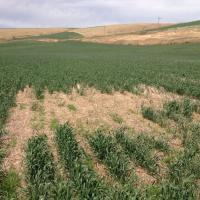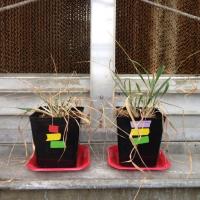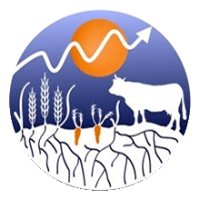How climate change affects ecological interactions
Agriculture has been relied upon as a food source for humans for thousands of years. For much of that time, wheat has been one of the most important crops that people have grown. Wheat, like most crops, is reliant upon certain quantities of water to grow properly.
According to climate change projections for the Pacific Northwest, water availability will change drastically both in timing and quantity in the next 50-100 years. It is projected to have more water during the winter months and less water during the summer, meaning that most crops grown in the PNW will be under drought stress.
Interactions between drought and pests. Drought is not the only stress that the crops will have to deal with as the effects of climate change increase. Research has shown that in times of drought, insect populations and plant viruses are much more successful. This means that growers will have to fight off three major plant stressors at once: drought, pests, and viruses
To be able to effectively fight off these three stressors, growers must understand the effects of all three individually and interacting. To recognize these effects, REACCH runs experiments that explore the ecological interactions of plants, viruses, insects, and drought.
Wireworms in wheat. As wheat is widely grown in the Pacific Northwest, and there is an emerging cereal pest called the wireworm that feeds mostly on wheat, it is the perfect model system to begin to answer this question. The wireworm is the larval form of a click beetle. It lives underground for up to five years before emerging in its adult form. While the wireworm is in its larval form, it feeds on seeds and roots in the soil. Wireworms especially like the seeds and roots of wheat and other cereal crops, and can cause huge amounts of damage to fields where there is heavy feeding, as seen in the photo below.
Virus and aphid interactions. One of the viruses that causes the most damage to wheat is Barley Yellow Dwarf Virus, transmitted by the Bird Cherry-Oat Aphid. Both this virus and its vector were used as part of the model system used in the experiment.
Our experiment. Each of the three stressors (wireworm, virus, drought) was applied to half of the plants in the experiment which led to eight different treatments. Each treatment was applied to eight individually potted wheat plants, leading to a total of 64 plants in the experiment.
These eight separate treatments allowed us to see a) how each stressor affects the plant individually, b) how two of the stressors interact and affect the plant, and c) how the interaction of all three stressors affect the plant. This is important because in an agricultural field it might be difficult to eliminate all three of the stressors, but if the experiment shows that the interaction of two, or even three, of these stressors could actually be beneficial to the plant, then the grower would not have to worry so much about the crops.
Preliminary results. Although the final data for the experiment has not been collected yet, there are some visible differences between the treatments already. As might be predicted, the plants that have been preyed upon by wireworms are doing visibly worse than the plants that have no wireworms (Fig. 2).
REACCH is a project focused on the interdisciplinary study of climate change in Pacific Northwest agriculture. An important part of REACCH is understanding how climate change will affect agricultural systems, specifically wheat, in the future. Experiments such as this are an integral part of REACCH as they will allow us to help growers integrate scientific studies into their agricultural practices, which in turn increases yield despite growing concerns about climate change.
REACCH Undergraduate Summer Interns come from all over the country to spend 9 weeks with REACCH scientists conducting research, gaining job and graduate school training, and sharing their experiences. These blogs are the culmination of their research experience.
Editor: Leigh Bernacchi

Figure 1. Effects of wireworms on wheat.

Figure 2. Two plants with treatments that differ only in the fact that one has a wireworm (left) while the other does not (right).

If you’re interested in climate and agriculture, continue reading articles at the blog aggregator, AgClimate.net

